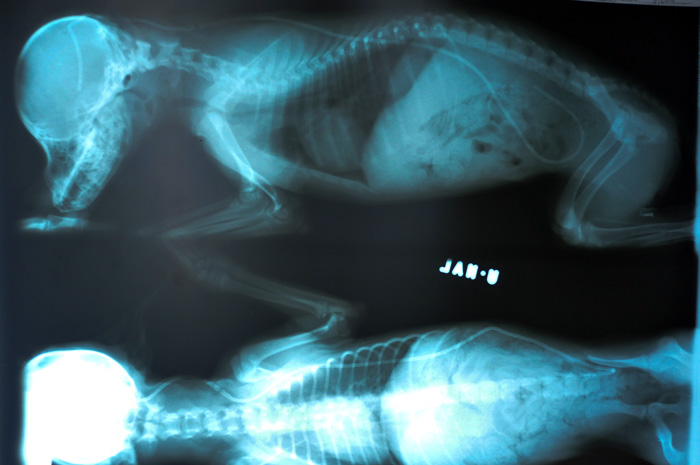This disease, very rare in dogs, is the impediment for draining cranial (cerebrospinal) fluids, which are in charge of cushioning the brain, and also facilitate the transportation of molecules.
As a consequence, and due to the pressure this liquid exerts on the cranial tissue, an inadequate growth of the cerebral structure and cognitive deficiencies appear in the patients. "There are very rare cases, maybe because puppies die at a young age or they are sacrificed before they are taken to a hospital," explained Piero Vargas, Veterinarian and director of this hospital for animals.
For solving this problem, Universidad Nacional de Colombia performed, for the first time, this surgery. "The proceeding was a ventriculo-peritoneal shunt that consisted in implanting a tube to drain the cerebrospinal fluids from the cranium to the abdomen," explained Vargas, who asserted that in two months after the intervention, this puppy will have a normal life.
An innovative technique
The medical team in charge of the surgery was made by Doctors Jose Luis Granado, Camilo Padilla, Henry Meneses and Piero Vargas, who performed this successful surgery thanks to an opportune diagnosis and appropriate intervention. "The diagnosis was made through x rays and ultrasonography, and the surgery was performed with hospital materials and the cooperation of San Ignacio Hospital," mentioned Vargas.
"For the surgery the animal has to be shaved on its upper part. Three incisions are made, the first on the cranium to visualize the bones and drill. With a catheter, a tube is introduced to the lateral ventricle and then the tube is placed subcutaneously up to a second incision in the neck. In this incision the end of the tube is exposed and assembled to a second bigger tube that goes under the skin as well. Finally, a cut is made in the muscles and the long tube is placed along the abdominal cavity," explained surgeon Jose Luis Granados.
With this result and the implementation of this technique that takes only 30 minutes, and a recovery period of one week, the doctors from the Hospital for Little Animals of Universidad Nacional de Colombia expect to continue saving lives of puppies that suffer from this disease.
 Correo Electrónico
Correo Electrónico
 DNINFOA - SIA
DNINFOA - SIA
 Bibliotecas
Bibliotecas
 Convocatorias
Convocatorias
 Identidad UNAL
Identidad UNAL



